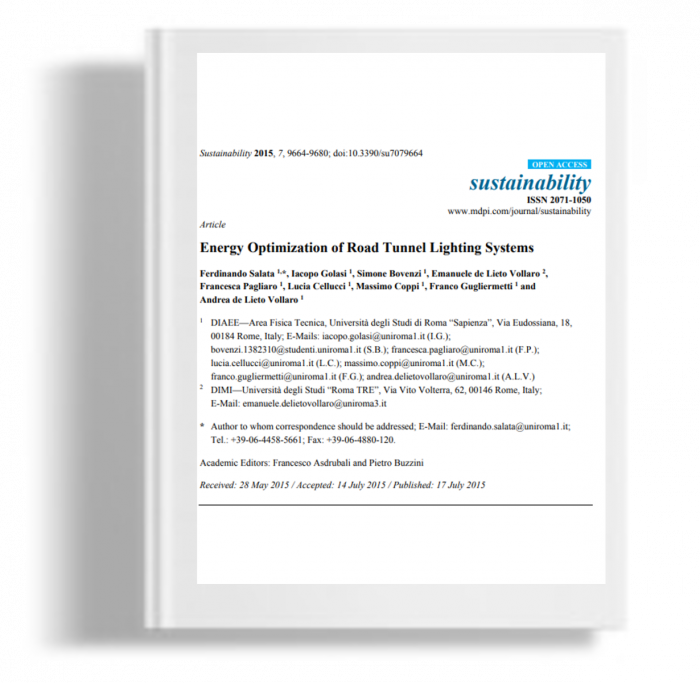Kami menggunakan cookies untuk membuat pengalaman Anda lebih baik. Untuk mematuhi petunjuk e-Pribadi yang baru, kami perlu meminta persetujuan Anda untuk menyetel cookies. Pelajari lebih lanjut .
Energy optimization of road tunnel lighting systems
A road tunnel is an enclosed and covered infrastructure for the vehicular traffic. Its lighting system provides 24 h of artificial sources only, with a higher amount of electric power used during the day. Due to safety reasons, when there is natural lighting outside the tunnel, the lighting levels in the stretches right after the entrance and before the exit must be high, in order to guide the driver’s eye towards the middle of the tunnel where the luminance must guarantee safe driving, avoid any over-dimensioning of the lighting systems, and produce energy savings. Such effects can be reached not only through the technological advances in the field of artificial lighting sources with high luminous efficiency, but also through new materials for road paving characterized by a higher reflection coefficient than other ordinary asphalts. This case study examines different technical scenarios, analyzing and comparing possible energy and economic savings. Traditional solutions are thus compared with scenarios suggesting the solutions previously mentioned. Special asphalts are interesting from an economic point of view, whereas the high costs of LED sources nowadays represent an obstacle for their implementation.
- Baca | Unduh PDF
- Energy optimizatio n of road tunnel lighting systems
A road tunnel is an enclosed and covered infrastructure for the vehicular traffic. Its lighting system provides 24 h of artificial sources only, with a higher amount of electric power used during the day. Due to safety reasons, when there is natural lighting outside the tunnel, the lighting levels in the stretches right after the entrance and before the exit must be high, in order to guide the driver’s eye towards the middle of the tunnel where the luminance must guarantee safe driving, avoid any over-dimensioning of the lighting systems, and produce energy savings. Such effects can be reached not only through the technological advances in the field of artificial lighting sources with high luminous efficiency, but also through new materials for road paving characterized by a higher reflection coefficient than other ordinary asphalts. This case study examines different technical scenarios, analyzing and comparing possible energy and economic savings. Traditional solutions are thus compared with scenarios suggesting the solutions previously mentioned. Special asphalts are interesting from an economic point of view, whereas the high costs of LED sources nowadays represent an obstacle for their implementation.

